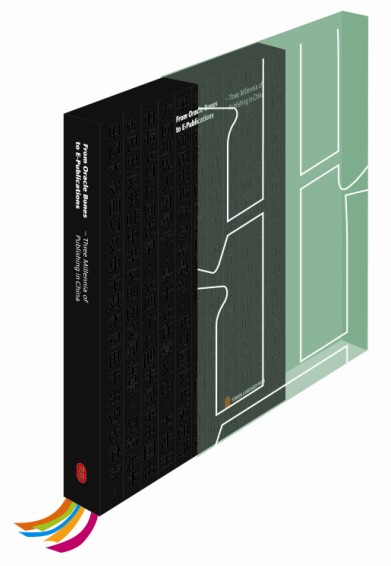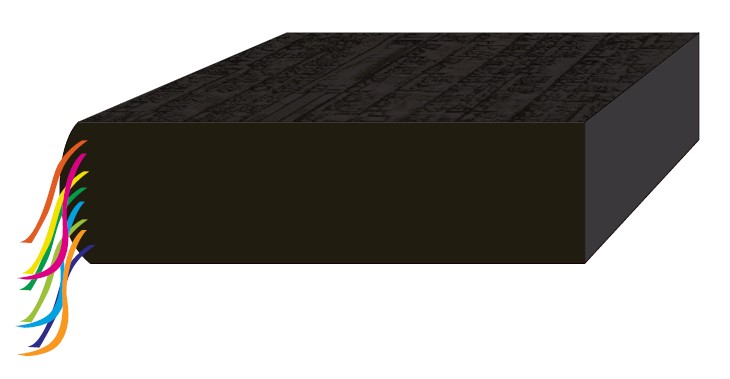From Oracle Bones to E-Publications: Three Millennia of Publishing in China

As one of the world's four ancient civilizations, Chinese civilization has continued for thousands of years without interruption. It is a culture characterized by long history, rich content, unity in diversity, deep and far-reaching influence, and continuous development. To review 3,000 years of Chinese publishing is to see the reasons behind the changes that took place in each period of publishing activity. Therefore, the publication and presentation to the world of this illustrated summation of China's 3,000 years of publishing is of great significance.
The body of From Oracle Bones to E-Publications: Three Millennia of Publishing in China is divided into four periods using a chronological approach that displays China's publishing history and culture against the whole panorama of Chinese cultural development. Papermaking technology, printing technology and the application of modern digital technology are the transition markers, thus: 1. The invention of characters and the appearance of books—the era of writings on bamboo and silk; 2. The invention of papermaking technology—the era of books handwritten on paper; 3. The invention and development of printing technology—the printing era; 4. The development of digital technology, a profound influence on Chinese publishing—our current digital publishing era. Modern Chinese publishing is highly diverse in character, a pattern that encompasses print publishing, on-line publishing and mobile-phone publishing. The Appendices cover book layout and binding in ancient China, large-scale compilations and complete works, and books most representative of Chinese culture.
The aims of this retrospective of 3,000 years of publishing in China are to explore the essence of Chinese publishing history, to clarify the course and changes in its development, to carry forward this precious historical and cultural legacy, to add to the accomplishments of the publishing industry and to present more outstanding publications to the world.

About the editor-in-chief
Xiao Dongfa is a professor and doctoral candidate advisor at Peking University's School of Journalism and Communication. He is also Director of the School's Institute of Modern Publishing and chairman of the School's academic committee. In 1994, Professor Xiao was honored as an outstanding member of Peking University's young to middle-aged academic faculty. In 1995, his name was listed in the Dictionary of International Biography published by the International Biographical Centre, Cambridge, UK. His major research interests include the history of books and publishing in China, information retrieval, publishing operations and management, yearbooks, Beijing scenery and traditional culture.
His Treatise on Chinese Publication and Printing History won two awards, namely the Seventh Beijing Award for Outstanding Achievement in Philosophy and Social Science, and the Chinese Culture Outstanding Book Award. The book Chinese Book Collection Building of which he was executive editor-in-chief was nominated for the Fourth National Book Award, and his Outline of Yearbook Studies won research publication awards from the Yearbook Research Society and from Peking University. Xiao Dongfa has published more than 180 learned articles and is a six-time recipient of outstanding teaching achievement awards from Beijing Municipality and Peking University. He has lectured or participated in academic meetings in the Republic of Korea, Japan, the USA, the UK, Singapore and Malaysia. He is also a visiting professor at Nanhua University in Taiwan, Hebei University, Beijing Institute of Graphic Communication, Shandong University of Technology and Zhejiang University of Media and Communications.
 0
0 







Comments